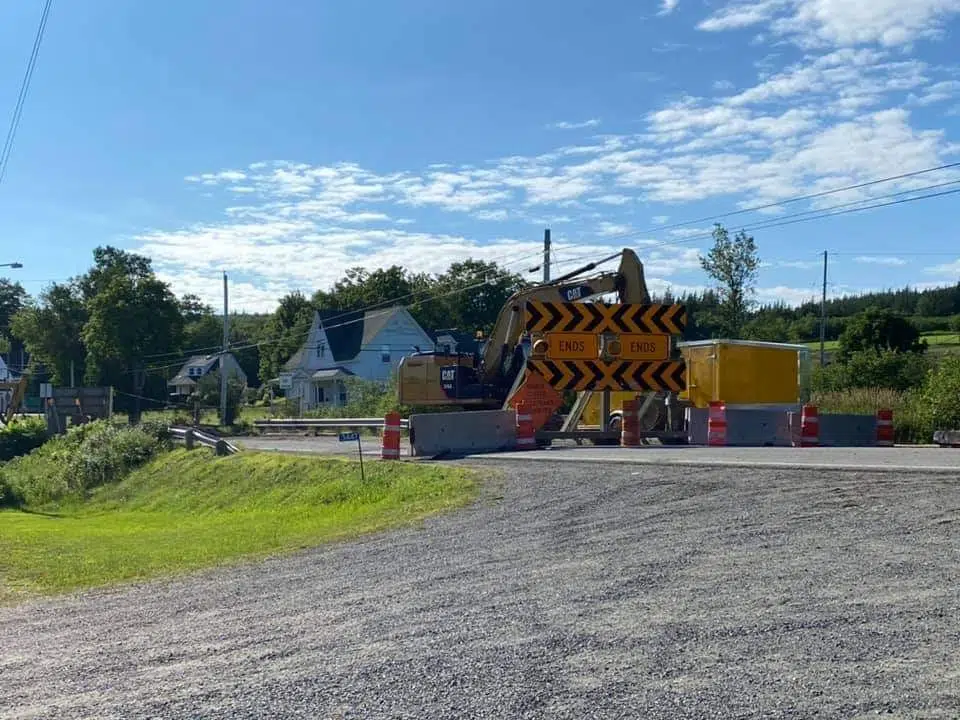
Frizzle Bridge, Brooke Village; photo courtesy of Brittany MacKinnon
At a meeting Thursday night, residents of Brook Village came together to voice their concerns surrounding the lack of communication and consultation prior to the closing of Frizzle Bridge.
Discussions at the meeting revealed that the Department of Transportation had notified the provincial Emergency Management Office, but not the local EMO, which would notify local first responder groups.
“That’s something we’re definitely going to have to try to improve,” said Steve MacDonald, area manager for Inverness North & Victoria with the Department of Transportation and Active Transportation, who was at the meeting.
The meeting was arranged by a group of people living on Route 252; Sherryl Harrison is one of those people. She also took notes at the meeting and helped organize questions from the community.
“We knew that we weren’t going to get a bailey bridge,” she said in an interview after the meeting. “[The meeting] is really to make sure that in future projects, they do have that communication and transparency with the communities they’re working in.”
The Bridge was originally slated for repair in 2019, but upon further inspection on July 12, the department decided it needed to be completely replaced.
The closure was posted on the province’s road conditions website two days before the bridge actually closed, furthering confusion, residents say.
Carolyn MacDonald, who lives in Brook Village and helped spread the word of the meeting, said in an interview prior to the meeting, the impacts of the closure were far reaching.
Farmers with fields on both sides of the bridge had to harvest crops early, meaning less yield; transport trucks take longer to arrive with supplies for farmers and local businesses; people travelling to Sydney for regular medical care and people working in neighbouring communities are slowed down by a lengthy detour through rough roads.
The closure also means volunteer fire services aren’t able to access some of their coverage area, Carolyn MacDonald says, and will have to rely on other volunteer fire departments in the event of an emergency.
Steve MacDonald says the Department of Transportation is going to allocate more time and resources to the project to speed up the timeline and minimize impacts on the community.
Community members have asked for enhanced signage on the detour, which residents say lacks visible direction signs and doesn’t have posted speed limits. Additionally, they’ve requested that speed limits on the detour be reduced from 80 km/hr.
Steve Macdonald acknowledged that the detour — which reroutes people through dirt roads — wasn’t ideal, but the department felt was the only option.
Department reps originally estimated, on July 12, that the work would take six to eight weeks. But District Bridge Engineer, Lloyd Hall, says, if all goes well, the bridge could be done sooner.
Hall also noted, the new bridge will be wider, and therefore safer.
Harrison says, overall, she’s pleased with how the meeting went.
“I think sometimes [with regards to] rural areas, they maybe think we’re small and they forget the impact, but I really feel that we were heard tonight by everyone that attended.”









